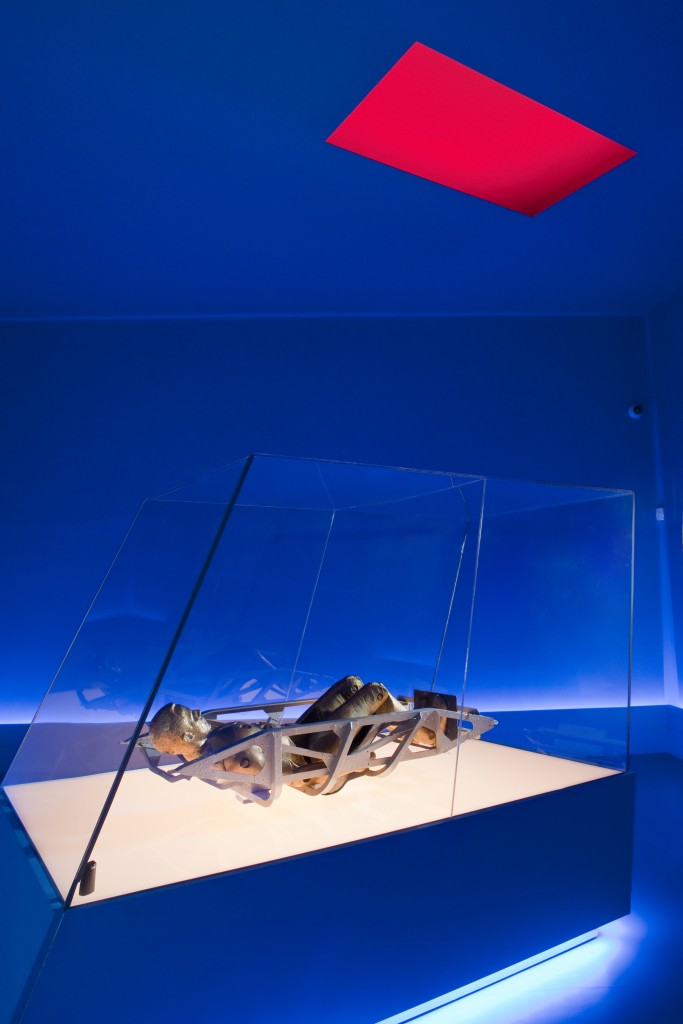It’s tricky getting to Mars. The voyage takes months, your spacecraft has to perform some delicate manoeuvres along the way and then – there is Mars itself! It has not been a welcoming world. Almost 50 missions have been launched to the red planet by a host of different nations and space agencies. Some 30 of these have failed or enjoyed only very limited success. This chequered history is reflected in the Science Museum’s Exploring Space gallery: the flight-spare biology experiment from NASA’s Viking missions flags the two first successful landing missions on Mars, back in 1976; nearby is the British-built Beagle 2 European Space Agency (ESA) lander which, we now know, did make it successfully to the planet’s surface in 2003 but failed to call home; alongside, ironically, is the type of detector (also built in Britain) flown on the Mars Reconnaissance Orbiter of NASA that discovered the intact Beagle 2, very near to its landing target, a decade after contact had been lost.


The unluckiest Mars nation was the Soviet Union. Just two partial successes from over 20 launches. The first of the Russian Federation’s attempts also ended in failure when Mars 96 failed to leave Earth, splashing and crashing its way across the Pacific and South America. One of the instruments it was carrying, also on show in the Science Museum, is Britain’s FONEMA, designed to probe the mysteries of Mars’ magnetic field.
Twenty years later and Russia is trying again, this time with today’s Exomars Trace Gas Orbiter mission launch – a collaboration between ESA and the Russian Federation’s national space agency Roscosmos. This spacecraft will orbit the planet, studying for traces of gases like methane (with instruments including Britain’s ozone-mapping ultraviolet spectrometer) that might be associated with biological activity, and release an experimental lander called Schiaparelli. Russia has provided the launching rocket (Proton) and three more of the scientific instruments. Schiaparelli will test landing techniques for the second part of the Exomars programme to be launched in 2018, also a Europe/Russia collaboration, when a roving vehicle – built in Britain – will be released to drive around the red planet’s surface.
Despite all the years of setbacks these latest missions will join a flotilla of spacecraft now orbiting above or trundling over the dusty plains and craters of Mars, scanning, probing, drilling and sampling. Slowly and surely we are learning so much more about our solar system neighbour, the planet that over centuries has pulled on our imaginations like no other.
There is, of course, an ultimate goal to strive for: landing a human on Mars and returning her of him safely to the Earth. And as President Kennedy said of such challenges back in 1962, we choose to do them, ‘not because they are easy but because they are hard.’ Getting humans to Mars and back will be for spaceflight what Concorde was to aviation – an equivalent expansion of effort and expense between the Wright Brothers’ pioneering flight in 1903 and the first supersonic passenger service over seventy years later. The ramping up of cost and capability in order to reach Mars will be orders of magnitude more than that required to get Neil Armstrong and Buzz Aldrin on to the Moon’s surface in Apollo 11 and safely back home.

So will it ever happen? Visitors to the Science Museum’s recent Cosmonauts exhibition departed the display through a room bathed in blue with a red breach in the ceiling. Gazing up from its crystalline pod an android-like form, with the image of Yuri Gagarin – first human in space, offered no clear answer. It had been flown around the Moon in the Zond 7 spacecraft by the Soviet Union in 1969 – too hazardous a mission for a human to undertake, it had been decided at the time. Going to Mars will be very dangerous. We look to it in the night sky and think what it is like to be there, but send only robotic emissaries. Will Exomars encourage us to visit Mars in person or will it demonstrate once again how much easier it is to rely on robots. Well, we got to the Moon because it was hard to do.
